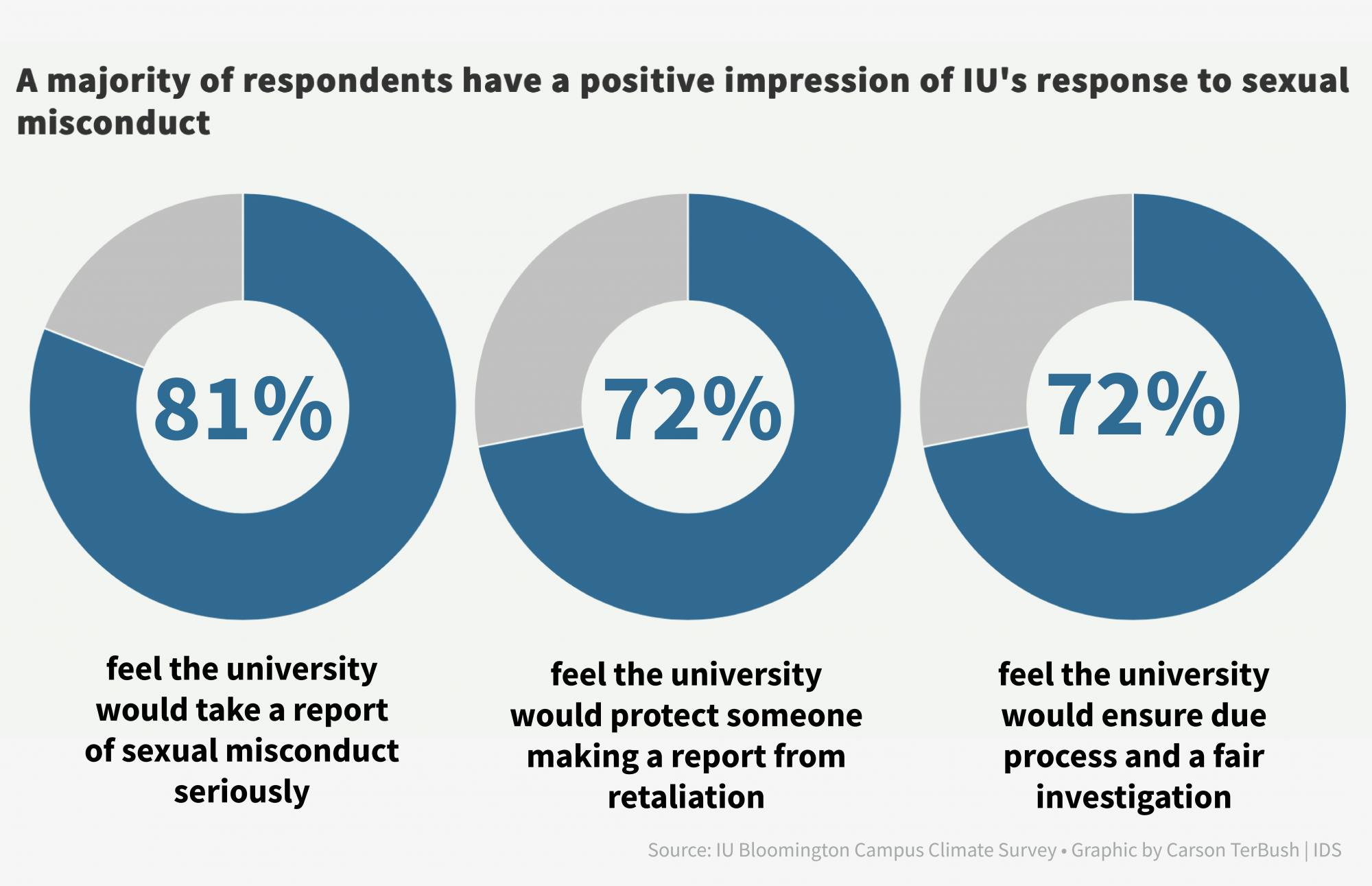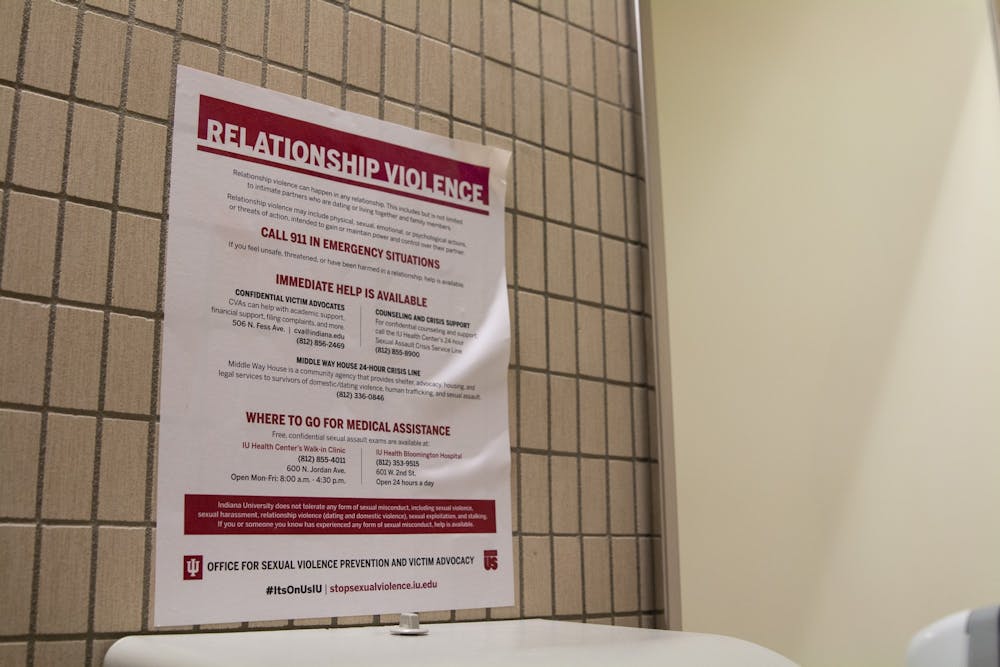IU recently released the results of a campus climate survey from 2019 meant to gain input from students about sexual misconduct and other related issues.
The survey was the second installment of a survey launched in 2014. Emily Springston, director of institutional equity and university Title IX coordinator, said they collected more demographic information in the 2019 survey, such as the experiences of students of color and transgender students.The survey was conducted at eight out of nine of IU campuses.
According to the report, the survey was emailed to a random sample of about half of the student body in February and March 2019. The data in the report was received from 15% of students who were invited to participate.
Lesle Stella, assistant director of compliance and education, said the survey results are helpful but only represent 7% of the total undergraduate and graduate population.
Stella said students appeared to have a general increase in awareness of the problem, what sexual misconduct is and how they can play a role to stop these acts.
“It gives us a really good look into the experiences that a lot of our students have had and the feelings, attitudes and beliefs that a lot of students have,” Stella said.
The survey said 82% of students think sexual misconduct is an issue on campus and 92% think it is a problem throughout society.
Springston said one of the bright spots of the survey was how 74% of participants said they think they can do something about sexual misconduct.
“We see the response from students saying they think it's a problem but they often think they can do something about it,” Springston said.
Springston said another positive was the number of students who spoke with friends about their experiences. Springston said this data supports a reflection of IU Bloomington’s work in active bystander education. She said they are teaching students not only how to prevent and speak up about sexual misconduct but also how to be supportive with someone who had such experiences.
The survey also collected data on students who experienced sexual misconduct before and since coming to IU. Compared to the 2014 survey, there was an increase for undergraduate women experiencing non-consensual sexual touching from 29% to 42%. However, there was a decrease in sexual harassment from 35% to 26%.
Stella said the university does not have clear reasons behind these results. She said one of the reasons for the increase may be because the definition of nonconsensual sexual touching was tweaked to include examples. She said it also may be that students have an increased awareness of what constitutes non-consensual sexual touching.
IU junior Celeste Coughlin, co-organizer of the group Shatter the Silence’s march in August of 2018 and committee member who worked on the analysis and update the language of the student code of conduct, said she feels the survey can be improved in many ways including increasing the total number of students surveyed and narrowing who is asked certain questions.

One piece of data Coughlin said she felt was misrepresented was how many students who said they were content with how the university deals with sexual misconduct.
“People who don't have experience with the hearing process don't have an understanding of how it works,” Coughlin said. “People who experienced that process are the ones who have an accurate reflection of if universities are actually taking a report of sexual misconduct seriously.”
Coughlin said a better representation could be shown, if the university specifically surveyed students who went through the system of making a report and having a hearing. She said that information would allow administrators to have a better understanding.
She also thinks IU can do a better job with its educational programming. She said there are currently little consequences for students who do not attend such workshops.
“If they're going to say that this is their solution, then there has to be consequences for not participating in this,” Coughlin said.
Springston said the survey is helpful to find areas within the issue of sexual misconduct for the university to focus on and possibly change in its educational programming.
“We can refocus or shift,” Springston said. “We've already started that with each of our campuses.”
IU has sexual assault education programs including a musical program at New Student Orientation, MyStudentBody online training and It’s On Us: Alcohol and Consent Bystander Intervention Workshop.
Springston said the bystander workshop was valuable because peers speaking about sexual misconduct has a greater effect on students than an administrator doing so.
Another program at IU is IU Police Department’s Rape Aggression Defense course which teaches basic self defense for women. Sgt. Ryan Skaggs has been an instructor of the course for about two years.
“The great thing about R.A.D. and any self defense course is the empowerment that people get from it,” Skaggs said.
The course features nine hours of drills and instruction. The final three hours are optional and allow participants to put what they learned to the test against officers in padded suits.
“It's all about creating a positive learning environment and making everyone feel comfortable with a very uncomfortable subject matter,” Skaggs said.






